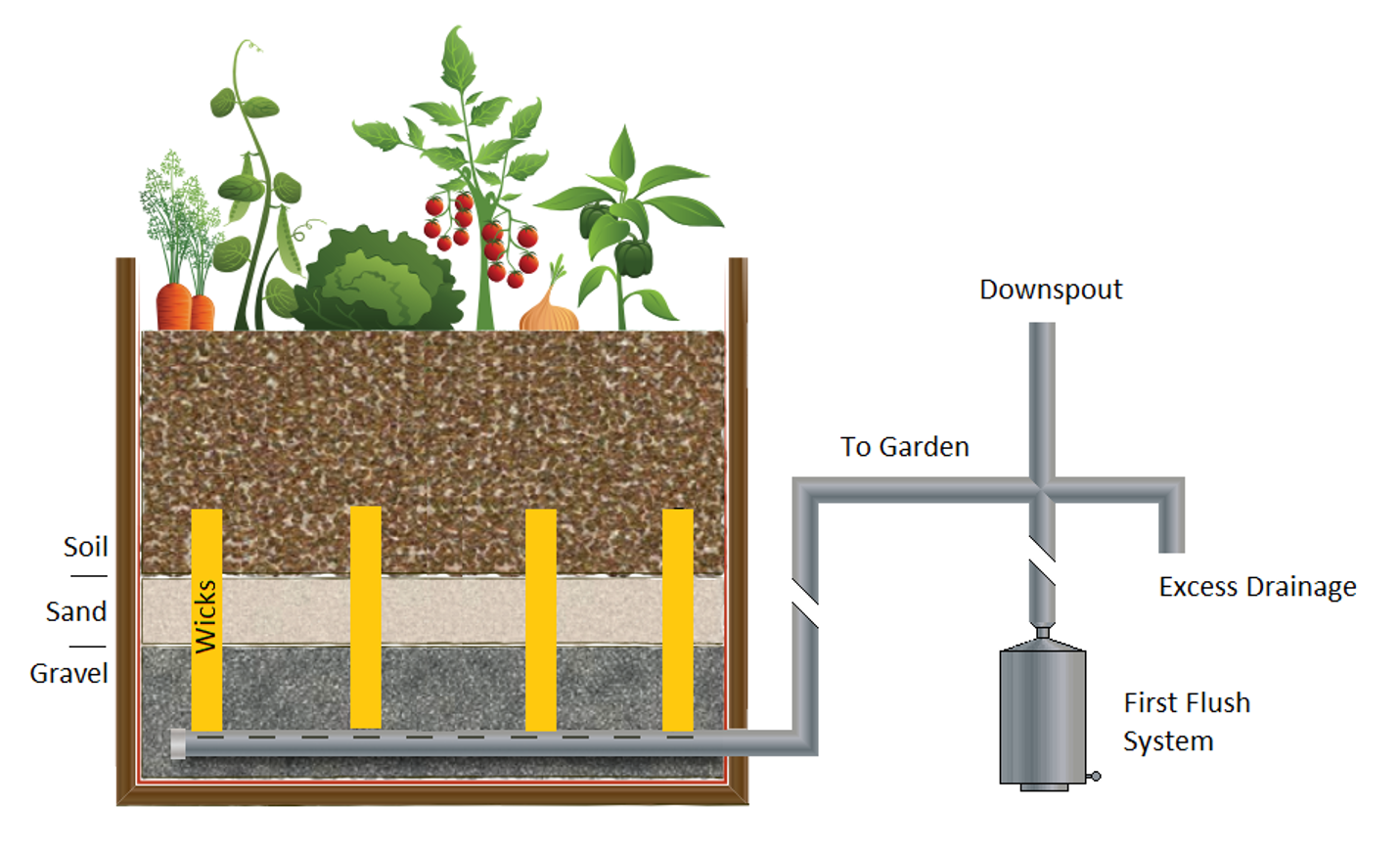Vegetable Rain Gardens
 If you visit the gardens we’ve been constructing at the Religious Coalition for Emergency Human Needs, you might notice that four of the garden beds are significantly taller than the others and have pipes sticking out of the ends. That’s because these are a pilot garden bed design from the Hood College Center for Coastal and Watershed Studies called “Vegetable Rain Gardens.”
If you visit the gardens we’ve been constructing at the Religious Coalition for Emergency Human Needs, you might notice that four of the garden beds are significantly taller than the others and have pipes sticking out of the ends. That’s because these are a pilot garden bed design from the Hood College Center for Coastal and Watershed Studies called “Vegetable Rain Gardens.”
Vegetable Rain Gardens reuse rooftop runoff that would otherwise flow into storm drains and into our local water supply, picking up contaminants and debris along with it. Our VRGs are connected to rooftop downspouts so the water can instead be used to water our garden beds.
A “first flush diverter” will allow the initial rainfall during each rainstorm to “wash” the rooftop, with the water being directed away from the garden beds, so the following clean water can flow directly to the gardens.
Water is piped underneath each garden bed and is stored in a gravel reservoir. Ultimately, the water will be drawn up through a sand filter with the help of wicks to water the garden soil.
We at the Center for Coastal and Watershed Studies designed these beds because we saw an opportunity to combine two major issues of community concern into a single project — excess urban stormwater runoff and local food insecurity. We are so excited to be partnering with the good folks at the Religious Coalition in this effort.
Stay tuned throughout the growing season as we get these VRGs connected and operating for the first time!
Are you ready to say Hello?
Choose a Pathway
Information will vary based on program level. Select a path to find the information you're looking for!
